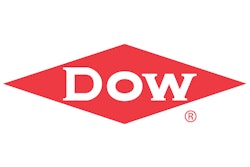Amid low-level grumbling about delayed approvals and improperly released proprietary information, the Food and Drug Administration is moving to smooth out the bumps in its three-year-old “fast-track” packaging approval program.
But at a conference in Washington, DC, in October, industry executives pressed FDA officials to make changes in the program. The FDA officials pressed back, challenging the companies that submit food contact notifications (FCNs) to do a better job of producing complete, initial applications.
The FCN program began in January 2000. Under its provisions, the FDA has 120 days to reject an application for a new indirect food additive used in food packaging, a so-called food contact substance. Companies use that fast-track approval process when the new additive poses no public health or environmental risk.
Congress forced the FDA to put the program in place so that packaging additive manufacturers—basically chemical and packaging manufacturers—and their packaging suppliers could get new products, those that are clearly benign, on the market more quickly. Prior to the program, the packaging industry had to submit food additive petitions, which the FDA would sometimes mull over for years.
As of mid-October 2002, the FDA had received a total of 291 FCNs. The FDA has approved 206 of those. Submitters are a “Who’s Who” of the chemical specialty industry, including such frequent filers as BP Amoco Chemicals, Inc.; Rohm & Haas Co.; Engelhard Corp.; Dow Corning Corp.; and Ciba Specialty Chemicals Corp., just to name a few.
But packaging companies have been grumping lately that the FDA is continually asking for additional information after an application is submitted, resulting in a “resetting” of the 120-day clock.
At the October conference, FDA officials acknowledged those delays and committed the agency to finding new ways to speed applications through the approval process. “Improvements can always be made,” emphasized Alan Rulis, director of the FDA Office of Food Additive Safety.
Major players attended
The workshop was attended by about 50 industry representatives such as Ralph Simmons, an attorney at the Washington firm of Keller & Heckman, which represents the Society of the Plastics Industry’s food, drug, cosmetic packaging materials committee. Keller & Heckman is a frequent filer of FCNs.
Neophytes such as Peter Reed, research associate at the Ondeo Nalco Co. (Naperville, IL), were also there. Ondeo has filed one FCN in three years. Reed is helping to prepare the company’s second FCN for an additive used in the pulping process. The chemical will be used in paperboard boxes and other paper packaging. “Our customers won’t buy this chemical unless the FDA approves it via the food-contact notification process,” Reed said.
Reed was busily scribbling notes as both Rulis and Mitchell Cheeseman, director of the Division of Food Contact Substance Notification Review, stated that submitters of FCNs can keep the 120-day clock running by submitting higher-quality applications on the first go-around.
Cheeseman stressed the importance of “telling us the complete story” about a new additive. He noted that the FDA is happy to have informal pre-notification conferences with companies in an effort to guide them to the information they must include when formal application is submitted.
Changing requirements?
He then read a question someone had sent him prior to the start of the workshop. The questioner wondered about the “reliability” of FDA’s pre-notification advice and argued the FDA “has a history of changing its mind.”
Cheeseman argued the flip side of that argument. He noted that the agency has reset the 120-day clock when the initial application comes in without the information, or with new or different data from that which the FDA had asked for and expected.
At the same time, however, he acknowledged that there were gray areas and that industry complaints about burdensome data requirements, for example, may result from misperceptions. He noted that the FDA does indeed want data on all indirect chemicals that migrate from the packaging into the food.
“That data must be complete,” he said. “But it does not have to be exhaustive. If there is low exposure to a particular migrant, then it simply has to be mentioned in the application. That is all that is necessary.”
Deficiency letters
Under FDA procedures, the agency has up to three weeks after an FCN is first submitted to complete Phase I review. If the company’s application is accepted, the FDA sends out a letter of acknowledgment, and the Phase II review begins. But if there are problems with the application, the FDA sends out a “deficiency letter” to which the submitter has 10 business days to respond with additional data.
Simmons explained that many companies believe the FDA is sending out too many deficiency letters—occasioning a resetting of the 120-day clock—for minor data lapses. Cheeseman responded that the FDA makes a big deal over missing data only when its absence makes the FCN “suffer significantly and would delay the FCN from becoming effective.” He added that “even a small deficiency” can fall into this category.
There is also a continuing disagreement over the FDA’s contention that it does not have to notify a FCN submitter when the agency decides that information classified as “proprietary” in a FCN does not meet that standard. That can happen when a competing company files a Freedom of Information Act request with the FDA in order to see a FCN after it is approved.
The competitor hopes to get information on a new product’s manufacturing process—typically things such as catalysts and impurities, which are frequently labeled proprietary—so the competitor can get into the market with a knock-off in less time than it would otherwise take.
Cheeseman answered that the FDA has the authority to release information it feels was improperly classified as proprietary. But he committed to notifying the submitter of the FCN after the decision is made, which he admitted had not been done in all cases up until now. Members of the audience did not seem particularly satisfied with that response.

























